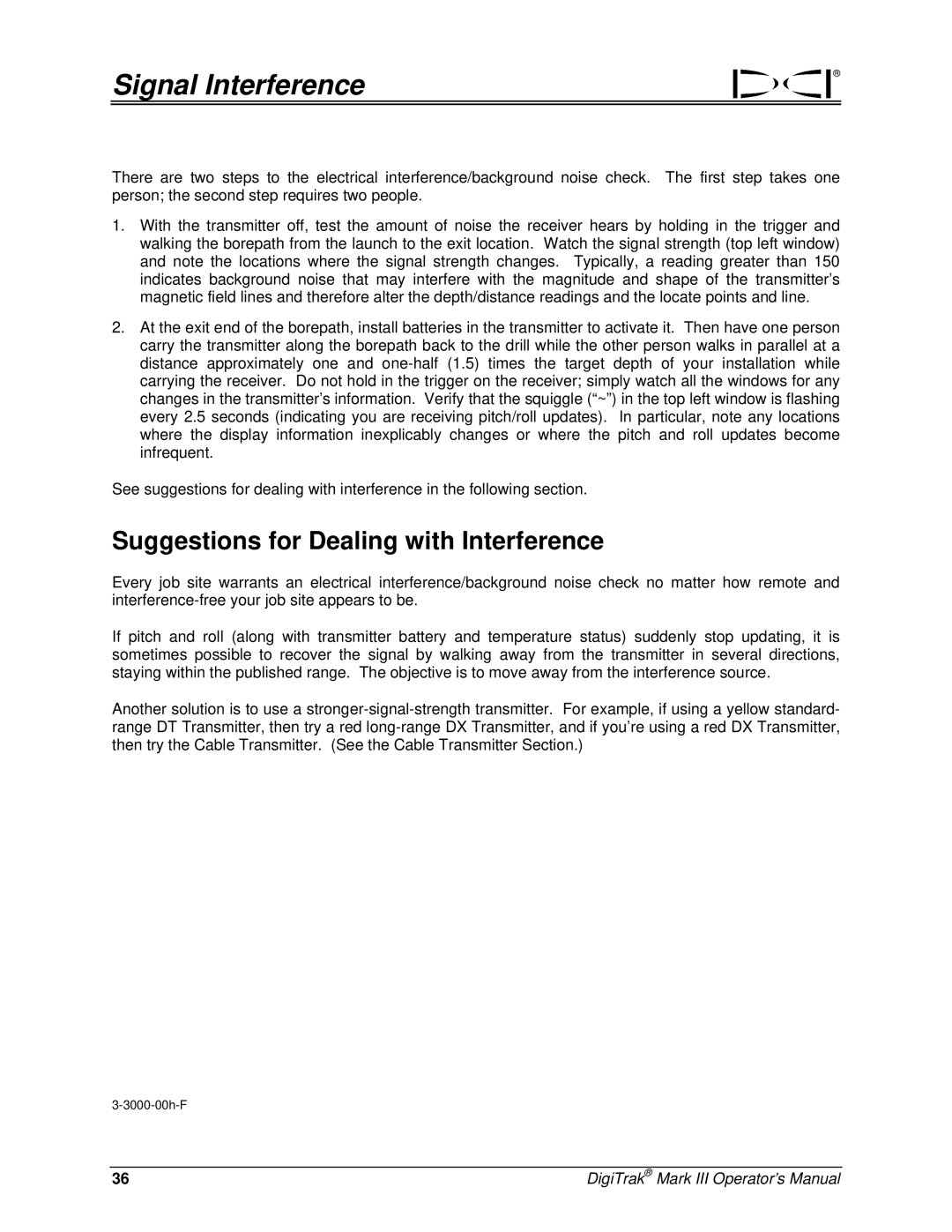Signal Interference | ® |
|
There are two steps to the electrical interference/background noise check. The first step takes one person; the second step requires two people.
1.With the transmitter off, test the amount of noise the receiver hears by holding in the trigger and walking the borepath from the launch to the exit location. Watch the signal strength (top left window) and note the locations where the signal strength changes. Typically, a reading greater than 150 indicates background noise that may interfere with the magnitude and shape of the transmitter’s magnetic field lines and therefore alter the depth/distance readings and the locate points and line.
2.At the exit end of the borepath, install batteries in the transmitter to activate it. Then have one person carry the transmitter along the borepath back to the drill while the other person walks in parallel at a distance approximately one and
See suggestions for dealing with interference in the following section.
Suggestions for Dealing with Interference
Every job site warrants an electrical interference/background noise check no matter how remote and
If pitch and roll (along with transmitter battery and temperature status) suddenly stop updating, it is sometimes possible to recover the signal by walking away from the transmitter in several directions, staying within the published range. The objective is to move away from the interference source.
Another solution is to use a
36 | DigiTrak® Mark III Operator’s Manual |
